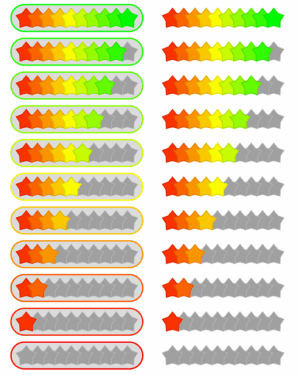On-Page SEO is a strategic approach to optimize web pages for search engines, focusing on elements like content, meta tags, headings, and structure. Crafting effective title tags, keyword research, mastering meta descriptions, creating high-quality content, using header tags (H1, H2, H3), optimizing images, and structuring URLs are key tactics. Regularly updating content signals to search engines that the site is active and authoritative, further Improving Organic Search Rankings. These techniques enhance user experience while providing clear signals to search algorithms about content relevance and quality.
On-Page SEO is the cornerstone of any digital visibility strategy. To improve organic search rankings, understanding and implementing key optimization techniques are essential. From crafting compelling title tags and keyword research for relevant terms, to mastering meta descriptions and creating high-quality content, each element plays a crucial role in enhancing your site’s visibility. This article delves into these aspects, providing actionable tips to optimize your pages and attract more organic traffic.
Understanding On-Page SEO: The Cornerstone of Digital Visibility

On-Page SEO is a fundamental strategy that forms the bedrock of any successful digital marketing campaign. It revolves around optimizing individual web pages to rank higher in search engine results, thereby increasing visibility and driving organic traffic. By focusing on elements within your site’s control, such as content, meta tags, headings, and structure, you can significantly improve your site’s performance in search engines like Google.
This type of SEO is crucial for improving organic search rankings because it ensures that your website provides a clear signal to search algorithms about the relevance and quality of its content. When search engines crawl your pages, they analyze various factors to understand user intent and determine the most valuable results to display. Optimizing these on-page elements can make your site more attractive and relevant to searchers’ queries, ultimately leading to better positions in search results.
Optimizing Title Tags: Crafting Compelling Headlines for Search Engines

In the competitive world of online visibility, optimizing your on-page SEO is a crucial strategy to improve organic search rankings. One of the most impactful elements is crafting compelling title tags—the headlines that capture the essence of your web pages and appear as clickable links in search engine results pages (SERPs). These titles are not just for aesthetics; they are the first impression potential visitors get of your content.
A well-optimized title tag includes relevant keywords that accurately represent the page’s content while keeping it concise and engaging. Search engines use these tags to understand and index pages, so ensuring they are keyword-rich and unique can significantly boost your site’s visibility. By incorporating strategic keywords, you make it easier for search algorithms to match your content with user queries, thereby increasing the likelihood of higher rankings and more relevant traffic.
Keyword Research: Unlocking the Power of Relevant Terms

Keyword research is a cornerstone of effective on-page SEO strategies. By delving into relevant terms and phrases, content creators can unlock powerful tools to significantly improve organic search rankings. Tools like Google Keyword Planner, SEMrush, or Ahrefs provide insights into search volume, competition, and user intent behind specific keywords. This process involves identifying high-value keywords that accurately reflect the content’s focus while ensuring they align with what users are actually searching for.
Once relevant keywords are determined, they should be strategically integrated throughout your content. This includes optimizing titles, headings, meta descriptions, and body text. Each element plays a crucial role in guiding search engines to understand your page’s topic and relevance. Proper keyword placement enhances the user experience by ensuring that search engine results accurately reflect the information users seek.
Mastering Meta Descriptions: Art of Persuasion in 160 Characters

Mastering meta descriptions is a key strategy in on-page SEO that can significantly impact your website’s visibility and improve organic search rankings. This 160-character snippet acts as a persuasive pitch, providing a concise summary of your web page’s content while enticing users to click through. Crafting compelling meta descriptions requires an understanding of both search engine algorithms and user intent.
A well-optimized meta description not only accurately reflects the page content but also incorporates relevant keywords naturally. It should capture the essence of what makes your page unique, highlight its value proposition, and create a sense of urgency or interest to encourage clicks. By focusing on quality over quantity, you ensure that every character counts, allowing you to effectively communicate your message within the given character limit.
Content Creation: Crafting High-Quality, SEO-Friendly Text

Creating content that is both engaging and optimized for search engines is a key strategy in improving organic search rankings. When crafting text, focus on providing valuable information that answers user queries. Conduct thorough keyword research to identify relevant terms your target audience is searching for, and naturally incorporate these keywords into your content without overstuffing. High-quality content should be well-structured, easy to read, and offer unique insights or solutions.
Ensure your text is free of errors and consistently formatted with headings, subheadings, and bullet points to enhance readability. Incorporate multimedia elements like images and videos to break up the text and make it more interactive. Remember, search engines favor content that provides a great user experience, so always keep your audience in mind when creating SEO-friendly copy.
Header Tags: Structuring Your Content for Readability and SEO

Header tags, including H1, H2, and H3, are essential for structuring your content in a way that’s both reader-friendly and search engine optimized. Using these tags effectively helps search engines understand the hierarchy of information on a page, making it easier to index and rank your content for relevant keywords. An H1 tag should be used for the main title of your page, clearly indicating the primary subject matter. H2 and H3 tags can then be utilized for subheadings, breaking up text into digestible chunks and enhancing readability. This structured approach not only helps visitors navigate your content but also signals to search algorithms that you’ve thoughtfully organized valuable information. By strategically incorporating header tags, you can significantly improve your site’s improve organic search rankings.
Moreover, header tags play a crucial role in conveying the topic and context of your content to search engines. Each heading should be descriptive and closely related to the keywords or phrases your target audience is likely to search for. This keyword-rich structure reinforces the relevance of your page for specific queries, boosting its chances of appearing in higher improve organic search rankings. Remember, clear and well-structured headers not only make your content more accessible but also contribute to a better user experience, which are both vital factors that search engines consider when determining website rankings.
Optimizing Images: Enhancing Visuals for Search Engine Crawlability

Optimizing images is an often-overlooked aspect of on-page SEO that can significantly improve organic search rankings. When search engines crawl websites, they process visual content as well as text. By implementing best practices for image optimization, you make your website more accessible and understandable to these crawlers. This includes using descriptive file names, adding alt tags with relevant keywords, and compressing images to reduce loading times without compromising quality.
Descriptive file names and alt tags not only help search engines index your images accurately but also convey the content of your visuals to users with visual impairments who rely on screen readers. Additionally, optimizing image size ensures that your website loads quickly, which is a crucial factor for both user experience and search engine rankings. Effective image optimization combines technical efficiency with semantic relevance, enhancing the overall quality of your site in the eyes of search engines.
URL Structure: Simplifying Links for Better Indexing

A well-structured URL is a powerful tool in your SEO arsenal, playing a pivotal role in how search engines crawl and index your website. When it comes to on-page SEO, simplifying your URL structure can significantly boost your site’s visibility and improve organic search rankings. Complex, messy URLs with numerous parameters and dynamic elements can confuse both users and search engine crawlers. Search engines like Google favor clean, descriptive URLs that make it easier for them to understand the content of a page.
By keeping URLs short, relevant, and keyword-rich, you provide valuable context to both users and search algorithms. This simplicity encourages better indexing, making it simpler for search engines to access and analyze your web pages, ultimately leading to higher rankings in search results. A straightforward URL structure also enhances the user experience, encouraging visitors to click and engage with your content.
Regular Updates and Fresh Content: Keeping Your Site Relevant

Regular updates and fresh content are vital for improving organic search rankings. Search engines prioritize websites that offer relevant, up-to-date information, as it reflects well on the site’s credibility and value to users. By consistently adding new content or updating existing pages, you signal to search algorithms that your site is active and authoritative in its niche. This can boost your visibility and drive more organic traffic over time.
When creating fresh content, focus on topics that are relevant to your audience and align with their search queries. Incorporate these keywords naturally throughout your text while ensuring readability remains the top priority. Regular updates also include optimizing existing pages by adding new information, revising outdated content, and making sure metadata (titles, descriptions) remain accurate and compelling. This continuous effort keeps your site fresh, engaging for visitors, and highly regarded by search engines.
